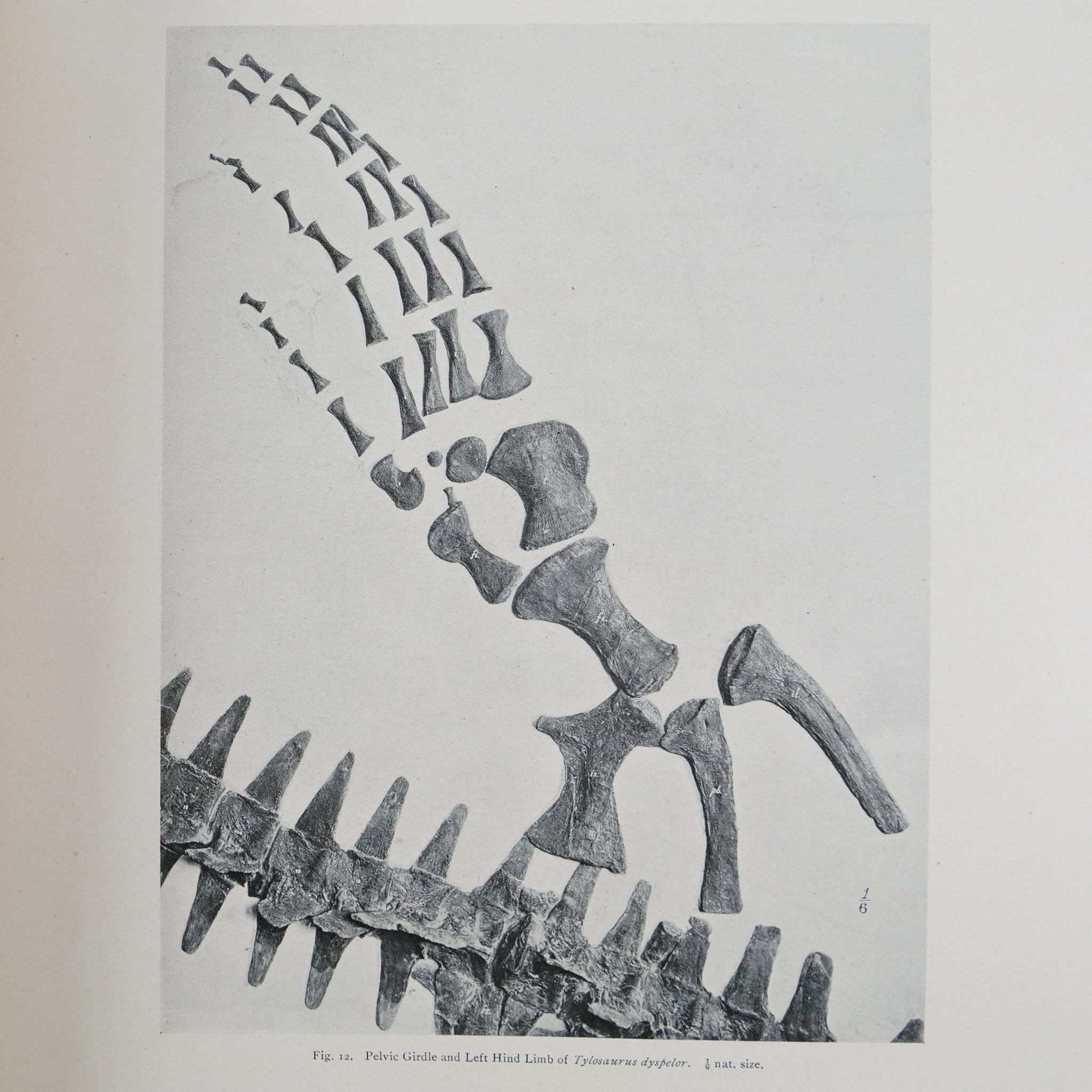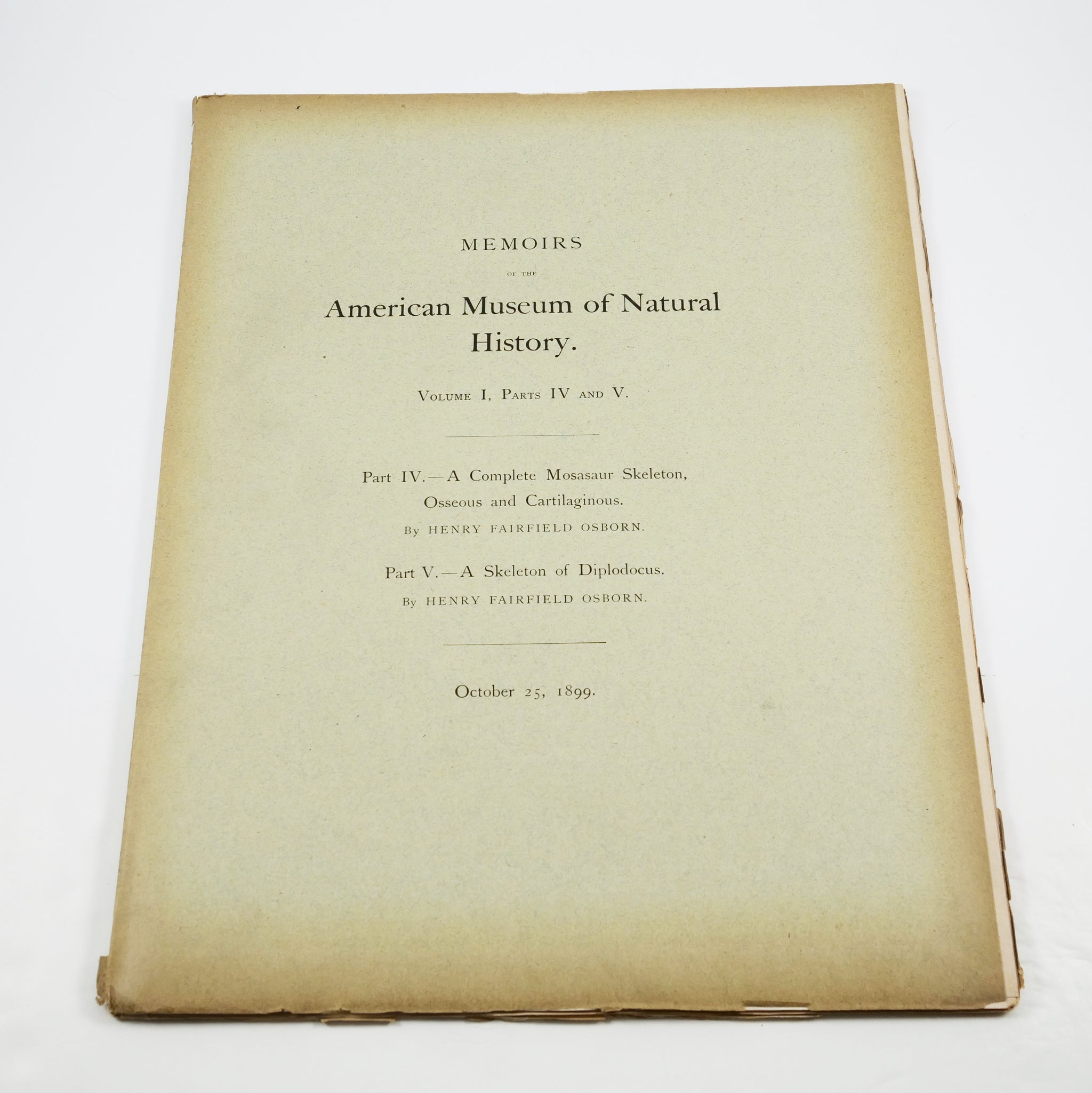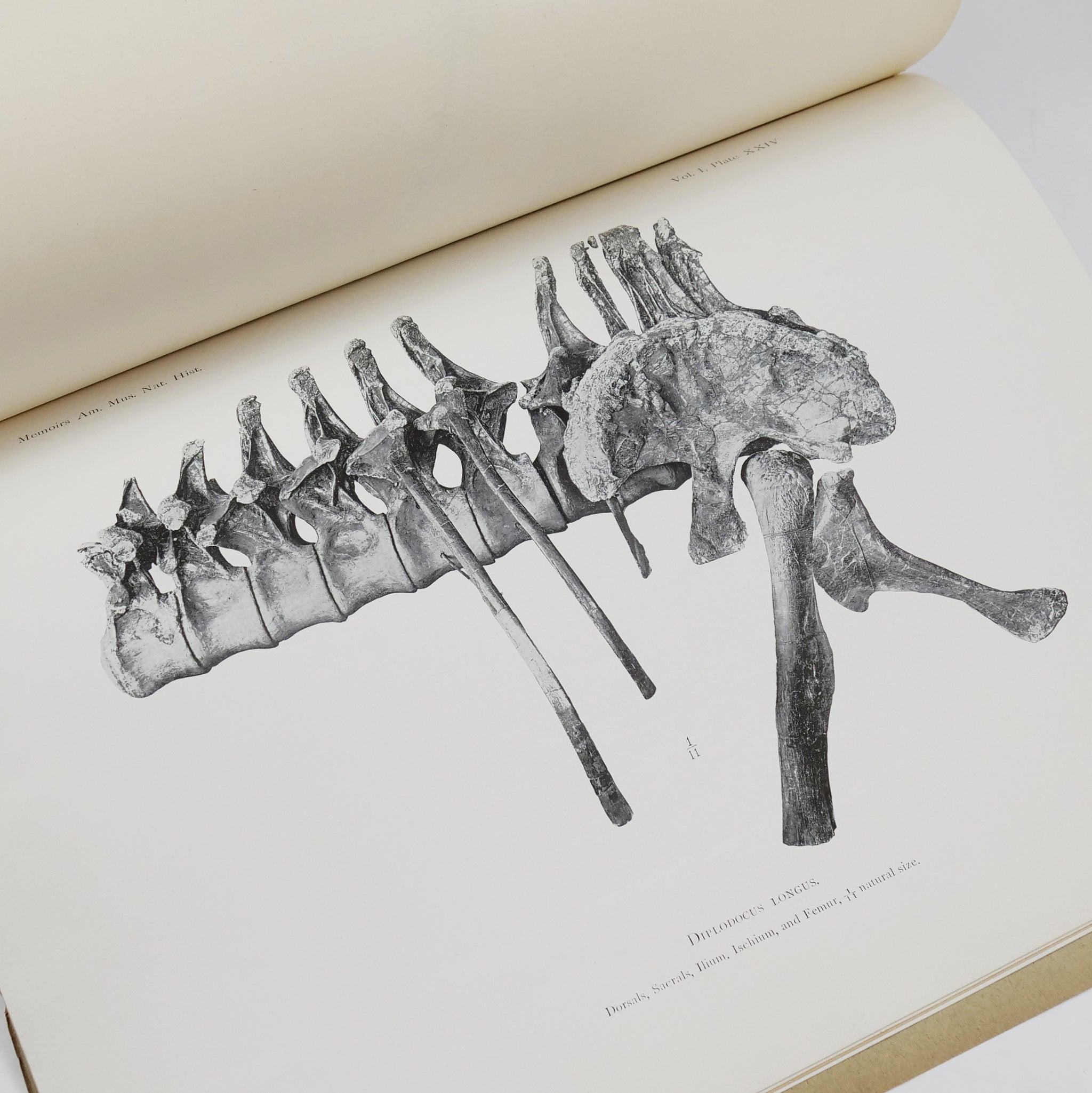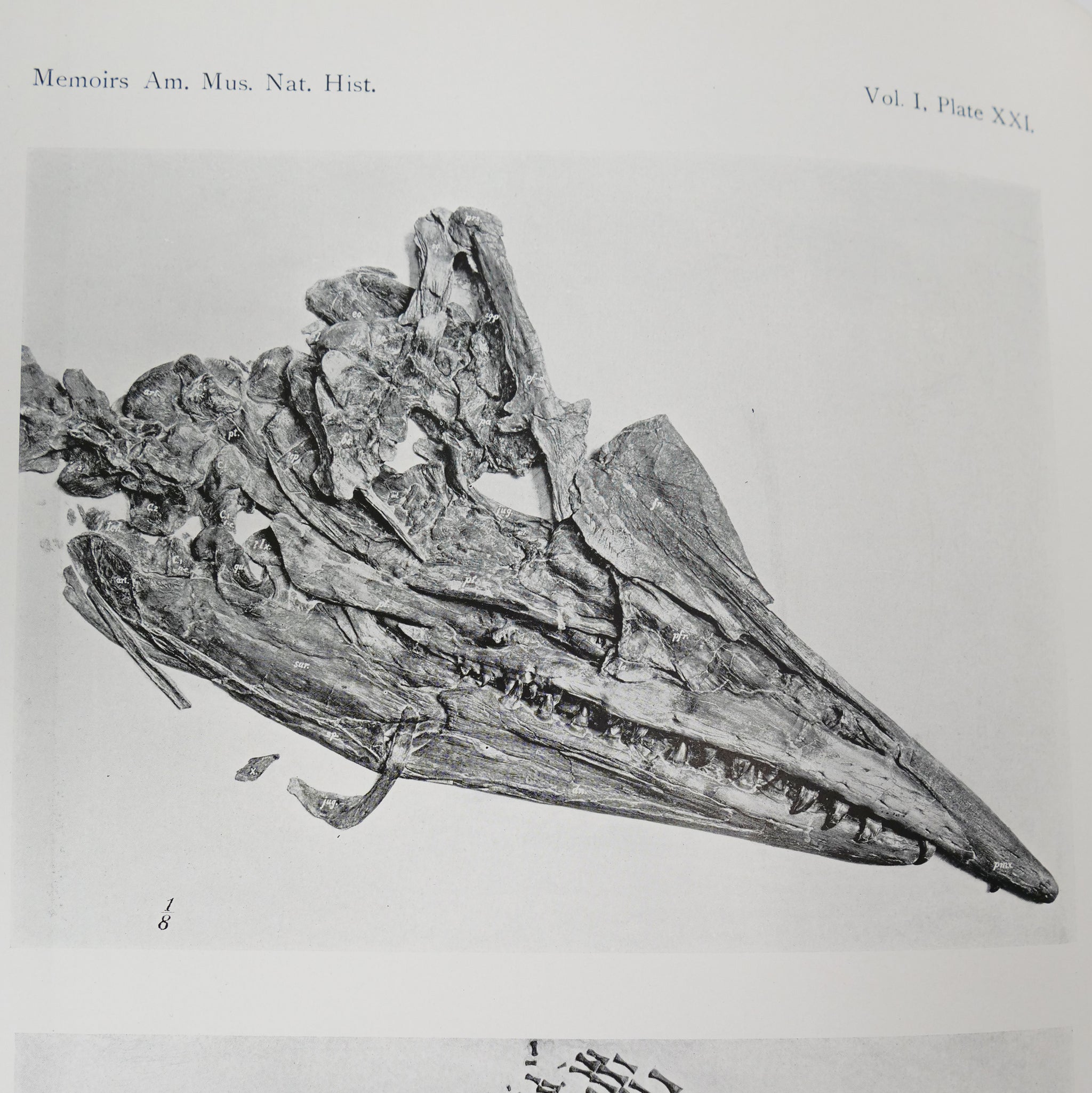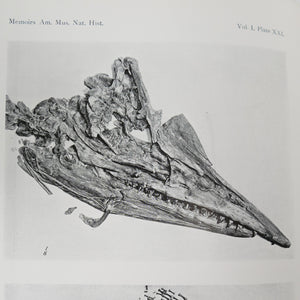Osborn, Henry Fairfield | A Complete Mosasaur Skeleton & A Skeleton of Diplodocus
£150.00
-
First edition, first printing of this paper proposing that Diplodocus was not sluggish as generally believed, and that individuals might have been able to raise themselves onto two legs by balancing on their tails. An unusually fresh and attractive copy, the contents unopened.
Palaeontologist Henry Fairfield Osborn (1857-1935) was president of the American Museum of Natural History for twenty-five years, during which he oversaw significant work on the discovery, description, and naming of new dinosaur species discovered in western North America, most notably Tyrannosaurus rex, Velociraptor, Albertosaurus, and Ornitholestes. As an administrator Osborn put new emphasis on museum displays, making them more visually appealing and accessible to the general public, though he also incorporated his profoundly racist and eugenicist views into those he designed for the Museum of Natural History.
The present paper describes a partial Diplodocus skeleton unearthed in Wyoming’s Como Bluffs by Barnum Brown and J. L. Wortman during 1897. Based on this skeleton, Osborn writes that, “There is a traditional view that these animals were ponderous and sluggish. This view may apply in a measure to Brontosaurus. In the case of Diplodocus it is certainly unsupported by facts” (p. 213) and also suggests that “The tail, secondly, functioned a lever to balance the weight of the dorsals, anterior limbs, neck and head, and to raise the entire forward portion of the body upwards. This power was certainly exerted while the animal was in the water, and possibly also while upon land” (p. 213). Modern research has confirmed Osborn’s assumptions, showing that Diplodocus’s musculo-skeletal structure probably allowed it to rear up on its hind legs with relative ease.
Bibliography: Linda Hall Library, Paper Dinosaurs 1824-1969, no. 24.
-
Memoirs of the American Museum of Natural History. Volume I, Parts IV and V. Part IV. — A Complete Mosasaur Skeleton, Osseous and Cartilaginous. Part V. — A Skeleton of Diplodocus. New York: The Knickerbocker Press for the American Museum of Natural History, October 25th, 1899.
Folio. Original grey wrappers printed in black. 7 photographic plates on glossy paper, folding diagram, illustrations throughout the text, some from photographs. Contents unopened. Slight wear at the ends of the spine, wrappers just a little frayed and tanned at the edges, faint toning to the edges of the leaves. An excellent copy.

